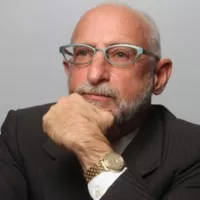- within Tax topic(s)
- with Senior Company Executives, HR and Finance and Tax Executives
- with readers working within the Accounting & Consultancy and Property industries
When an individual passes away, the property and assets s/he leaves behind are collectively referred to as her/his estate. An estate may consist of bank accounts, investments, real property, business interests, personal belongings, cryptocurrency, NFTs and other assets. If the deceased held only a partial interest in an asset, that fractional ownership is also included in the estate.
Estate administration is the legal process of identifying, managing, and distributing the deceased's assets, while also ensuring that any debts and the deceased's tax obligations are satisfied.
In Ontario, specific statutory procedures must be followed in order to complete the administration of an estate.
1. Determining the Existence of a Will
The initial step in estate administration is to determine whether the deceased left a valid will. If a will exists, it should be located, and the executor who was appointed should be notified.
If there is no will, or if the appointed executor is unable or unwilling to act, the deceased's next of kin may apply to the court to be appointed as estate administrator.
The executor or administrator is charged with collecting and managing the estate, discharging debts and tax obligations, and distributing the remaining assets to beneficiaries in accordance with the terms of the will or, in the absence of a will, pursuant to Ontario's intestacy laws.
2. Collection of Assets
The executor or administrator must identify and secure all estate property, which may include bank accounts, securities, real estate, crypto assets, private corporations and personal property.
In order to access and manage these assets, proof of death and proof of authority as the estate representative, by way of a probated will or a court appointment, must be provided to financial institutions, government bodies, and other relevant entities.
3. Payment of Debts and Taxes
The executor or estate administrator bears responsibility for settling all outstanding debts and liabilities of the deceased, including mortgages, loans, and any taxes owed.
In all provinces, this includes filing the deceased's final income tax return, also referred to as a 'terminal return,' and addressing tax obligations arising from the estate.
To ensure compliance, the estate representative, usually through an experienced Canadian tax lawyer, should obtain a clearance certificate from the Canada Revenue Agency confirming that all required taxes have been paid before making any distributions to beneficiaries.
If an estate's clearance certificate has not been obtained and assets have already been distributed without it, the estate trustee or executor becomes personally liable for any unpaid taxes or other amounts owed by the deceased or the estate, up to the value of the assets distributed.
In a recent Alberta case, Muth Estate v Liesch, 2019 ABQB 922 (CanLII), the executor was found to be personally liable for paying the outstanding taxes on her late husband's estate, after she received bad advice from two different accountants. She proceeded with distributing gifts from the estate to nieces and nephews and later learned that there was $60,000 of tax owing to CRA. CRA is very clear on this point: without the Tax Clearance Certificate, distributions from the estate should not proceed.
4. Distribution of Assets
Once all debts and taxes have been satisfied, the executor or administrator must distribute the balance of the estate. This may involve transferring title to real property, liquidating and distributing investments, or disbursing cash to beneficiaries. Where no will exists, assets are distributed to the deceased's next of kin in accordance with Ontario succession law.
Disputes may occasionally arise among creditors or beneficiaries wanting to contest a will during this stage. In such circumstances, it may be necessary for the executor or administrator to obtain legal assistance to resolve the matter in compliance with applicable law.
5. Probate in Ontario
Probate is the legal process by which a court confirms the validity of a will and formally appoints an executor or estate administrator (known in Ontario as an estate trustee). Probate is not required for every estate; however, it is often necessary where the deceased held certain assets in her/his name alone, such as real property or investments.
To obtain probate, the executor or estate administrator must file an application for a Certificate of Appointment of Estate Trustee with the court, together with the original will and supporting documentation. If the court is satisfied, it will issue the certificate, authorizing the estate trustee to administer the estate.
Although probate is not universally required, many estates benefit from it. Probate is generally necessary where:
- Court approval is needed to validate the will or confirm the appointment of the executor;
- There is uncertainty or potential dispute regarding the identity of the executor; or
- Some beneficiaries are unable to consent to the appointment (for example, minors or persons under legal disability).
- Where an authority, such as a bank or land registry office, requires proof of inheritance of the asset.
In contrast, probate may not be required in certain circumstances. Common examples include:
- Property such as bank accounts or real estate owned as joint tenants with right of survivorship automatically transfers to the surviving owner upon the death of the other;
- Very modest or insolvent estates (where liabilities exceed assets or where the only assets are small bank accounts).
6. Estate Administration Tax (EAT)
In Ontario, Estate Administration Tax (commonly referred to as probate fees) is payable on the value of assets subject to probate. The tax is calculated as follows:
- No tax on the first $50,000 of estate assets;
- $15 for every $1,000 of estate assets exceeding $50,000.
It is important to note that the Estate Administration Tax is a tax on estate assets, not an income tax. The exemption of the first $50,000 is distinct from the simplified probate process available for small estates valued at $150,000 or less.
Probate fees vary based on the provinces. For example, in British Columbia, probate fees are 1.4% of the gross value of the estate, with specific rates for different ranges of estate value. In Alberta, A maximum probate fee of $400 is charged, while in Manitoba, no probate fees are charged.
7. Assets Excluded from EAT
Certain assets are not considered part of the estate for EAT purposes and are therefore excluded from both the probate application and the tax calculation. These include:
- Real estate located outside Ontario;
- Real estate held in joint tenancy with a right of survivorship (as ownership automatically passes to the surviving joint tenant);
- Life insurance proceeds payable to a named beneficiary;
- RRSPs, TFSAs, and RRIFs with a designated beneficiary;
- Pension benefits;
- Jointly held bank accounts.
Pro tax tips – estate administration can be a complex process
Estate administration is a complex legal process that can place significant demands on families and loved ones during an already difficult time. Understanding the steps involved is essential, and obtaining guidance from an experienced Canadian tax lawyer can help ensure the process is handled properly and efficiently.
FAQ:
What are the general steps to administer an estate?
To administer an estate, you must locate the will, apply for probate, or letters of administration if there is no will, identify and protect assets, pay debts and taxes, provide an accounting to beneficiaries, and finally distribute the estate's remaining assets to the rightful heirs.
How is estate administration tax in Ontario calculated?
Probate fees are calculated on the value of the estate probated:
- $nil on estate assets up to $50,000, and
- $15 per $1,000 of estate assets over $50,000.
The content of this article is intended to provide a general guide to the subject matter. Specialist advice should be sought about your specific circumstances.


